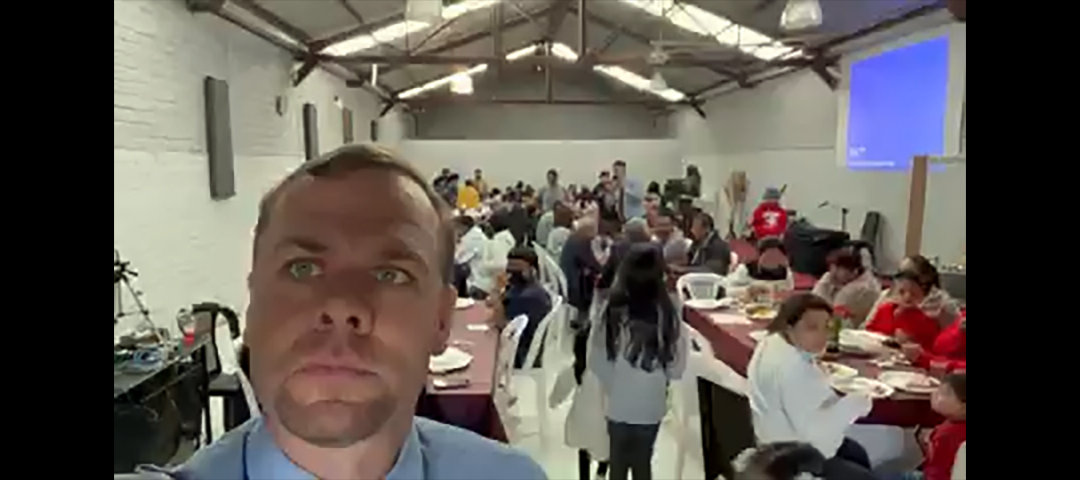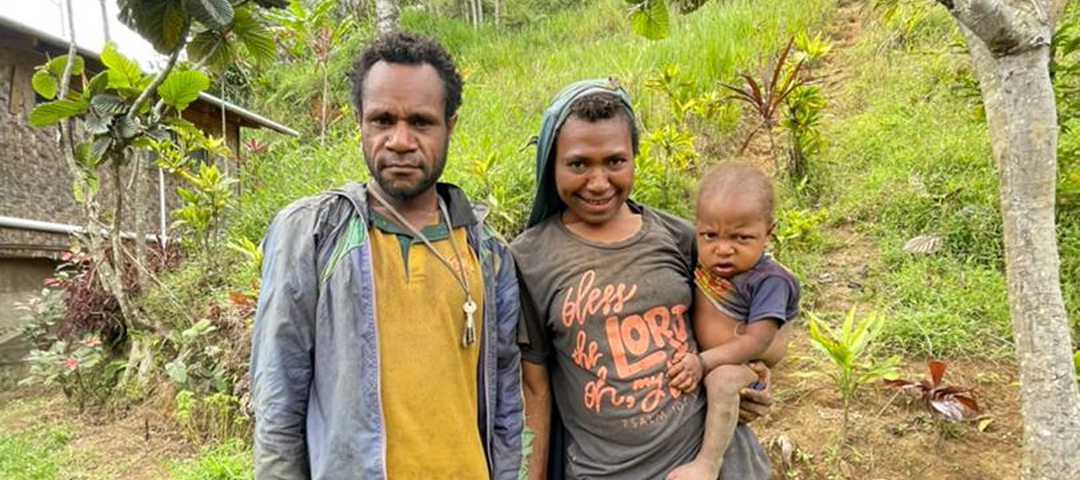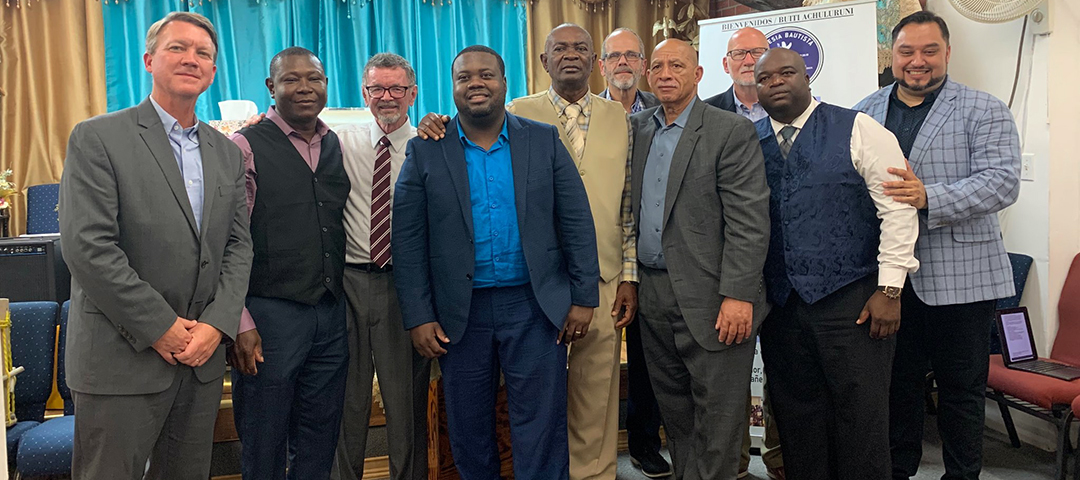
Doctrinal Integrity in Church Planting
October 25, 2022
Enabling Believers to Reach Their Own People
November 8, 2022By Holly Meriweather
The Garifuna story is one of tragedy and triumph that began with slavery in the 1700s. Shipwrecked and left to fend for themselves, the people group eventually settled in Honduras/Belize coastal areas. They have faced – and continue to face – hardships including government takeover of their highly profitable beaches.
But those are not the only areas where they have settled. There is now an estimated population of 200,000 Garifuna in New York City, where BMA Missions is excited to help plant the first Garifuna-speaking congregation in America.
BMA Missions representatives recently traveled to the Bronx to celebrate and participate in the ordination of Pastor Cherry Gamboa, former co-pastor of a BMA Garifuna-language congregation in San Juan, Honduras. With a secular job for financial support, two years ago he and his family relocated to the Bronx to plant a church and immediately began building relationships, inviting people to church services, and looking for a place to accommodate attendees.
After outgrowing the first location, they now rent part of a building and regularly baptize new believers. In fact, during the ordination service, five new believers came forward for baptism, which is not surprising since ethnic groups are much more responsive to the gospel than Americans. After baptism the congregation is very intentional and proactive in discipling new converts.
BMA Missions President John David Smith says, “For me as a missionary, the most exciting thing about this church plant is the aspect of generational multiplication. During the service, the question was asked, ‘How many of you were taught in Sunday school class in Honduras with Brother David Dickson all those years ago?’ About half the congregation raised their hands.
“But Pastor Cherry is not a direct disciple of Brother David. He is the disciple of a disciple. Sometimes it takes a generation or so to make real progress and for that work to mature. It’s just a great expression of the power of the gospel, the faithfulness of God, and how he uses people to fulfill his mission.”
With about 120 people in attendance, the service also included a sermon, a worship service with bongo drums, baptism, a baby dedication, and Father’s day gift-giving. Then church members brought food and continued celebrating God’s provision of this church in the Bronx.
Earlier this year Vice President of Strategy and Training Larry Barker and other Missions representatives attended the celebration of the first baptist Garifuna-language church plant in the U.S. (There are several Mennonite Garifuna-language churches.) Misión Bautista Garífuna Misionera Redención meets in the Bronx, New York, but the event was held in Blackwood, New Jersey, so the church could use their baptistry.
Latin America Regional Coordinator David Dickson, whose relationship with the Garifuna began in 1980, was an important part of the celebration. Barker says, “I wish everybody could have been there when David Dickson read from the Garifuna Bible. I looked around and saw faces light up. People are always drawn to their mother tongue when they hear it spoken, so it was an amazing moment, particularly because of Brother David’s love for the Garifuna.”
While Brother David and his family were on vacation in 1980, he heard two boys speaking an unknown language and asked them about their people group. He immediately felt a burden for them and began a relationship that has lasted to this day. He says, “Work on the Garifuna translation of the Bible began in 1950 through Wycliff translator Lilian Howland, who would later be my language instructor. The first printed New Testament in Garifuna was dedicated on March 1, 1983 in our church in San Juan, Honduras.”
Garifuna churches were first planted in Latin American countries like Honduras and Belize, and now there are twelve churches in the region. In addition to the Bronx church, there are Garifuna congregations in Louisiana, Houston, and Atlanta, and each of their pastors and church planters attended the event.
Two years ago, Larry Barker went to Redemption Garifuna Church’s first service. It was held in the basement of an apartment complex, which they quickly outgrew. The objective for American church planters is to have a self-sustaining church within five years. The rapid growth of the Garifuna church is remarkable but not unusual: Ethnic church plants grow much more rapidly.
According to Brother Larry, “Ethnic congregations understand the concept of church better than we do. Brick and mortar buildings are not important to them, so they focus on relationships. They lean on one another, encourage one another, and pray for one another. They do life together. We (Americans) are guilty of ‘consumerism’ and focus on consuming the service then getting on with our lives.”
“If we believe the church is not a structure but a congregation of baptized believers doing mission together, then we understand that it can be birthed in many different contexts including a living room, an elementary school, or a shade tree. All the functions of a church can be done without a building. American culture puts the emphasis on all the bells and whistles, but the Bible emphasizes building relationships so there can be gospel conversations with people. And that’s what a community of believers is anyway.”
Currently, Misión Bautista Garifuna Misionera Redención baptizes people who immediately begin the discipleship process. During the recent celebration service, in addition to those waiting to be baptized that day five new believers came forward with their decisions to follow Christ. They were then told that salvation is only the beginning and the discipleship process begins immediately. Brother Cherry and his ministry leaders are intentional about teaching and training new believers.
The United States is the most one-language nation on earth, so Garifuna speakers are drawn to churches like Redemption Missionary Baptist Mission. Because they share a common language they quickly become a faith community as they adjust to a difficult-to-understand culture and learn English. In addition to Garifuna, the other BMA America language churches include those that speak Russian, Arabic, Urdu and Spanish. Sharing a common language, building relationships, then sharing the gospel is critical and necessary for generational multiplication, and Redemption has clearly accepted the challenge to evangelize and disciple. Brother Larry says, “The gospel is for everybody, and I do want our churches to think about being multi-ethnic, but it takes time to reach them, win them, teach them, and train them.”

